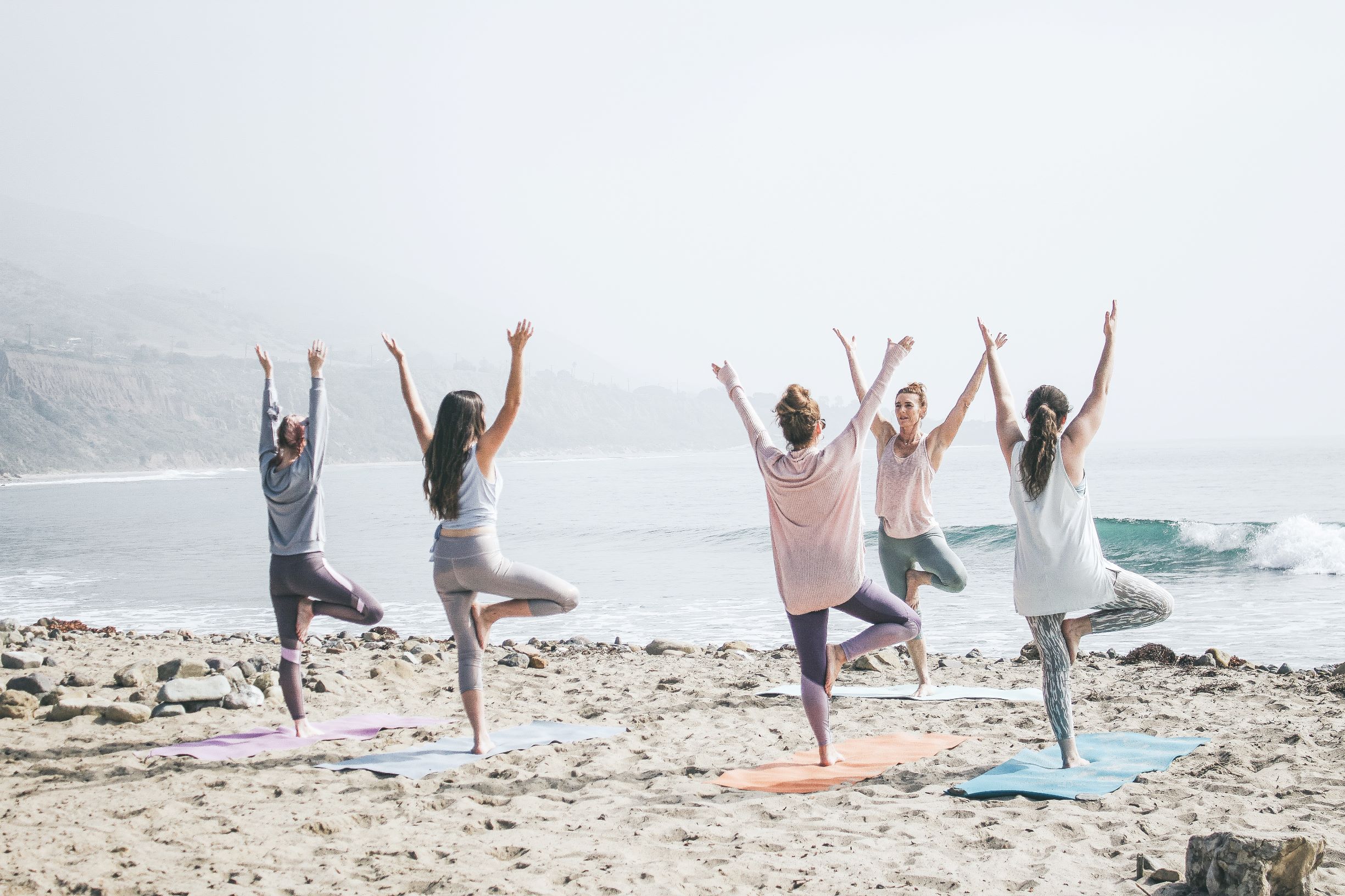The prevalence of yoga in Western culture seems to grow more and more with each passing day.
Boutiques and yoga studios are springing up everywhere, touting flexible, fashion-forward clothing, while promoting trends as hot as hot yoga. At this point, it’s hard to not know what yoga is.
So…what is it?
What is the aim of yoga, and what are the potential benefits of practicing it? Moreover, what is it about yoga that has everyone flocking to it?
The Basics of Yoga
To start, yoga is much more than just a wellness trend. What has allowed it to be such a sustainable practice is its holistic approach to health and well-being.
The ultimate aim of yoga is to encompass the entirety of the human person (mind, body, and soul) and facilitate one’s connection to the Divine.
According to Dr. Ishwar V. Basavaraddi, the word “yoga” is taken from the Sanskrit root ‘Yuj’, meaning “to yoke” or “to unite.”
This implication of union refers directly to the union of individual consciousness with Universal Consciousness, intended to inspire the realization that all is one, and all is united. When this state of union is achieved, one is said to have attained a state of ultimate freedom, also referred to as nirvana or moksha.
Yoga approaches the entrance to this spiritual condition of self-realization as an integration of the mind and body. So, while Self-realization is the primary goal of yoga, keeping the body in good health is also recognized as necessary toward achieving that aim.
In Hatha yoga—the most widely recognized form of yoga—the emphasis is placed on one’s breath and the physical positions taken during the practice. While it is more physical in nature than other forms of meditative yoga, Hatha yoga still boasts a plethora of health benefits.
According to an article published by the Harvard Medical School, yoga has been shown to improve one’s body image, eating habits, weight maintenance, muscle strength and endurance, and cardiovascular health.
Additionally, The West Indian Medical Journal cites yoga as a form of “mind-body medicine,” helping to reduce the physical and mental tension caused by stress. This makes yoga a great form of stress management, which in turn provides profound positive effects on the function and relaxation of the body.
With all this in mind, it may seem daunting to enter the large field of yogic practices currently available in today’s culture. Luckily, getting into yoga is easier than you might think. You don’t need to have fancy clothes or all the latest gear; all you need is an open mind and a serene space where you can stretch out comfortably.
Here are five simple poses to help you get started with yoga.
Cobra Pose
The cobra pose is a good starting position because it warms up the body for the rest of the yoga session. It’s important to open your yoga sessions with some gentle stretches and light meditation because it will help you to step into the mindful state that encompasses the aim of yoga.
To do the cobra pose, simply lie flat on your stomach and use your hands to gently stretch your torso upward. Concentrate on your breathing, and allow yourself to also move your other major muscle groups as you begin your session.
Learn more about the cobra pose here.
High Lunge
Once you’re comfortable with your mind and body, it’s time to introduce a slightly more intense pose: the high lunge. Upon examination, this pose appears similar to the cobra pose, only cranked up a notch.
To step into the high lunge, start in a standing position and slightly bend your knees as you place your right foot forward. Place your hands on the ground and keep the ball of your left foot on the floor as you lean forward enough for your right leg to form an angle. Allow your torso to rest on your right thigh and look forward. As you finish this pose, exhale, and repeat the exercise with your left leg.
Learn more about the high lunge pose here.
Warrior II Pose
The next pose will continue to lift your body up from the ground as you begin to primary use your feet for balance.
As with the previous pose, the warrior II pose begins in a standing position, or mountain pose. Begin by shifting your feet about 3.5-4 feet apart and raise your arms, palms down, to be parallel to the floor. Your front leg should be slightly bent, with your back leg kept fairly straight. Keep your front foot facing forward and your back foot at a 90 degree angle. Turn your head to look out over your fingers.
Learn more about the warrior II pose here.
Tree Pose
One of the most iconic and widely recognized yoga poses, the tree pose will add a bit of a challenge to your routine. As your body continues to be raised higher from the ground, your balance will continue to be tested and improved with practice.
To step into the tree pose, start in a standing position and bend your right knee upward to rest your foot within your inner left thigh. Notice that this shifts the right side of your hips upward. Adjust yourself so that your hips become level. This should cause your left leg and hip to bow and protrude respectively. When you’ve achieved balance, stretch your arms up and place your palms together, keeping your gaze forward. Hold this position for 5-10 breaths if you can.
Learn more about the tree pose here.
Child’s Pose
Child’s pose is a great closing position because it allows the body and mind to rest after the intensity of the prior poses. While the purpose of the opening poses is to stretch and prime your body for the upcoming yoga session, closing poses aid in integrating and surrendering to your practice.
For the child’s pose, begin by kneeling on the floor. Allow your body to flex forward, outstretching your arms and resting your palms on the ground. Your hips should rest on your heels as your forehead rests on the mat. Feel free to hold this pose for however long or short you need.
Learn more about the child’s pose here.
Conclusion
Keeping these poses in mind, yoga is not something that needs to be complicated.
It can be a simple morning routine to help you become alive and mindful for the day, or it can help you to release any stress and tension you may be holding before you go to sleep. However you choose to integrate this practice, remember to focus on your breath and keep your mind from dwelling on the stresses of life.
One of the beautiful aspects of yoga is that it allows you to take a short vacation from whatever might be weighing down on you. With practice, it can even help in lifting those stresses from your shoulders. That being said, incorporating yoga into your daily or weekly routine may be the key to cultivating a more mindful and serene life.

